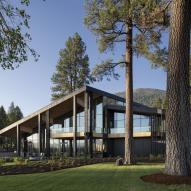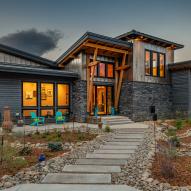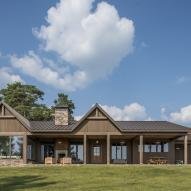Charred Larch—A Shou Sugi Ban Story.
To better understand our Shou Sugi Ban products, we should probably introduce you to the wood; it is all about the wood after all.
We start with the one that brought us to the dance. Our first Shou Sugi Ban species was released a few years ago using wood from right in our very own backyard.
Larch:Larix occidentalis- widely dispersed throughout the mountains of northeastern Oregon and Washington, dotting along the landscape of northern Idaho and western Montana, and throughout the area known as the Cascade Range of the Pacific northwest.
Larch is known to be a strong, dense wood, durable enough to be used in building construction for rough dimensions or finished for more visually appealing high-grade work like doors and flooring.
Similar to the Douglas fir, the two are often mixed in building materials. Visually Larch possesses a unique, often knotty grain pattern and has a considerable range in color and hue from deep reddish-brown Heartwood, to the yellowish-white Sapwood. The thick basal bark and low resin content help preserve the species and protect it from wildfires, making it a more readily available resource in the Pacific Northwest region. Studies have shown that Larch tends to grow better in fire-blackened soils as the fire releases nutrients that allow the trees to grow faster than other species. We figured if it could thrive through fire in the forest, it would be tough enough for demanding projects.
Our true adoration of Larch comes from its underutilization. Mixed amongst the rows of Douglas fir trees, Larch is an incidental species and often overlooked for the more popular firs and cedars. Not as well-known as other woods, Larch offers a local flavor and honors some of our Pacific Northwestern roots. On the other hand, Let’s face it, using it as a heating fuel (as is the case for many in the PNW) or simply leaving it to rot is far less planet-friendly than elevating it to a building material where it can continue its carbon sequestration.
I could travel down the path of where Shou Sugi Ban comes from, what it means, the history, regardless of translation, it is burnt wood. It’s charred black siding. Or you could read about it here. But no matter what marketing spin you put on it, we aggressively burn the surface layers of the wood to create a fire-resistant, moisture-resistant, and often bug-free material that looks great not only on the outside of your house, but also inside on accent walls, finish work, and even ceilings. Larch makes an ideal partner for Shou Sugi Ban because of its ability to evolve from the flames and hold an aesthetically pleasing charred appearance.
Why would anyone put burnt wood panels on their walls though?
Break out your Misfits t-shirt and black eyeliner–black clad walls are not just for the rebellious Goth kid anymore. Adding a dark, alluring wall to a clean Nordic design brings another level of elemental nature in the form of deep charred embers and natural wood grain. The strongest of the neutral colors, adding the dark tones of Shou Sugi Ban conveys a sense of sophistication and mystery, while exuding power and elegance in any room of the house. Black walls are in.
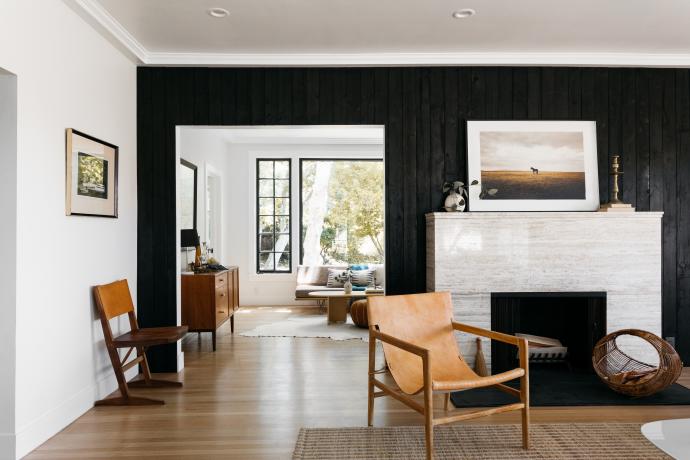
I know what you are thinking. Sure-you could do it yourself. Grab a torch and some wood planks, a few beers, and a Saturday afternoon. Boom! Shou Sugi Ban, right? While YouTube makes all things in life look easy, let’s be serious for a second. Do you have the time or will power to spend multiple afternoons slowly and accurately burning each board to complete that home renovation project? The burning process, while not scientific, is still a process. To do it properly and consistently we use machines that are programed to burn at a steady pace and to the correct depth levels in order to provide the best protection and charring process.
Then there is the soot and ash that happens during the making process…aka wood glitter. I can’t think of a better description for the charred surface material of Shou Sugi Ban, than wood glitter. Multiply that by several hundred square feet of wood for a project and you’ve entered Glitter-Armageddon. You’ll be walking around for days looking like Furiosa from Mad Max. Chimney Sweep Couture- so hot right now.
After they are cleaned up from the burning process each of our Shou Sugi Ban boards (be they Larch or Accoya or Reclaimed Oak or…you get the idea) can arrive in one of two stages:
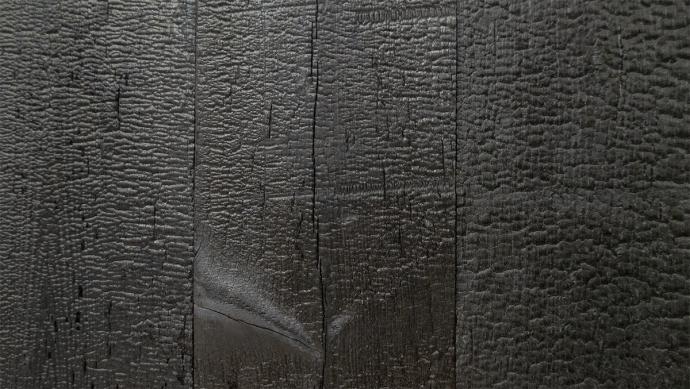
Deep Char, our signature blend of rugged, iridescent, charred alligator scales straight from the fire. Over time this finish will weather, and the ash will erode and evolve into a blended medley of cool tones and natural patina. While the material still provides protection from the elements, the effects of rain, and wind will eventually begin to wash and sculpt the charring to create a unique appearance.
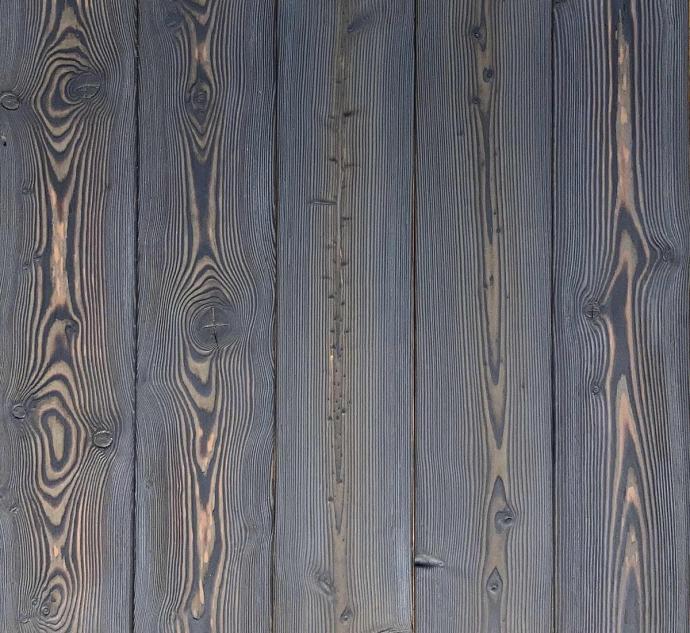
Twice Brushed, this process is exactly what it sounds like. Burn, brush, and then brush again. Doing so removes the char and ash from the surface layers and exposes the unsullied wood below the burned surface. Creating a mixture of natural grain, blended with the unconventional patterns created by the flames throughout the cells and flesh of the wood.
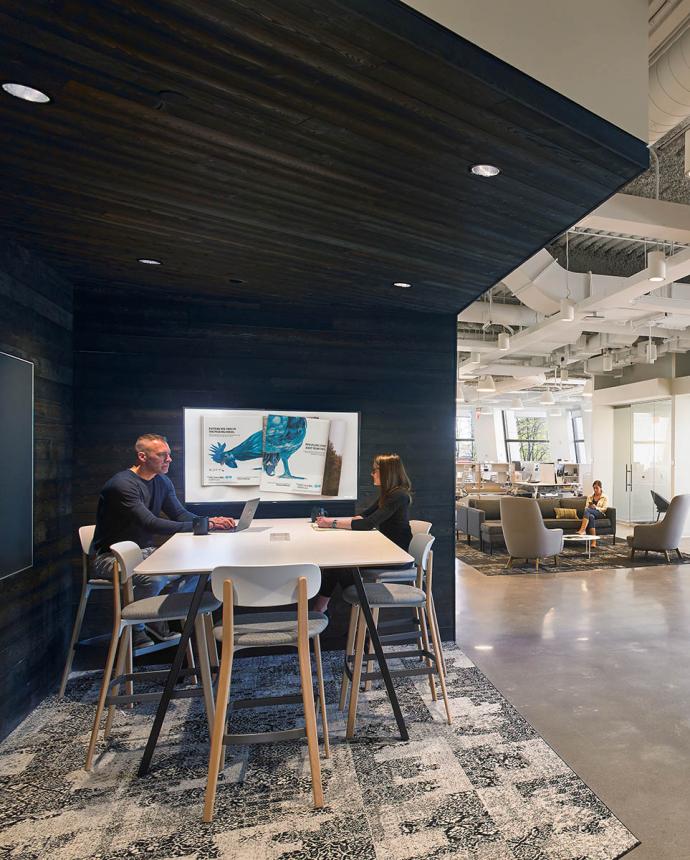
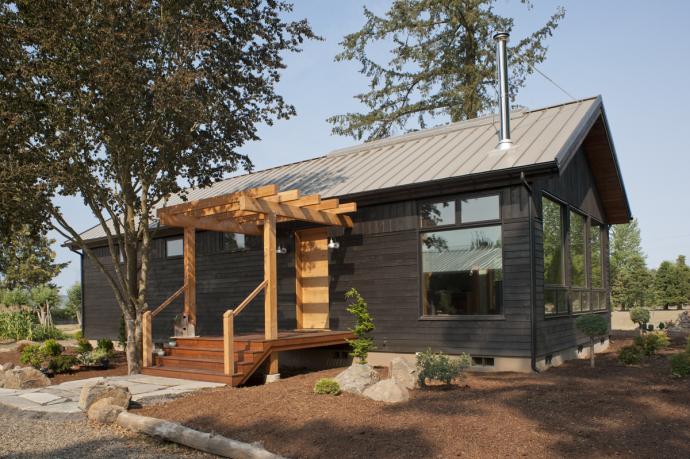
The best part? Besides the fact that we do the dirty work for you- It doesn’t just come in black. Would you believe me if I said you could have white Shou Sugi Ban? Well rejoice, you absolutely can. White or Toasted, Carbon, Cinder (A personal fave in Larch) … We have an exterior finish for just about any level of fire-kissed creativity you can muster. Just let us do the burning. (Remember: Glitter-Armageddon.)


